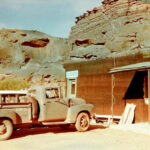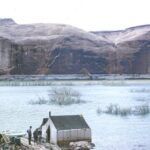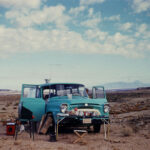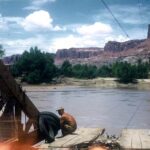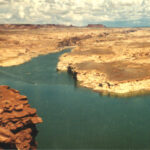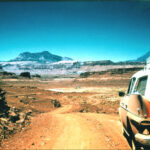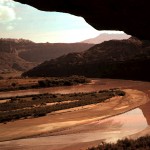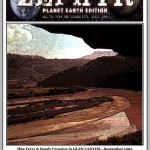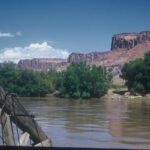
Even as the Utah governor and crowds of celebrants cheered the opening of Chaffin’s Hite ferry , plans were already underway to make the ferry obsolete. But the notion of a 700 foot high dam flooding almost 200 miles of the Colorado River and burying Hite under 150 feet of water was almost too much to comprehend. Or even believe. Its reality seemed eons away. And it was more than that. There was something magical about the place. Something special. Surely no one could do harm to such a place.
Even as the Utah governor and crowds of celebrants cheered the opening of Chaffin’s Hite ferry , plans were already underway to make the ferry obsolete. But the notion of a 700 foot high dam flooding almost 200 miles of the Colorado River and burying Hite under 150 feet of water was almost too much to comprehend. Or even believe. Its reality seemed eons away. And it was more than that. There was something magical about the place. Something special. Surely no one could do harm to such a place.
It was to that incredibly remote, hidden Eden that drew Ruben and Beth Nielsen to Hite and the Colorado River, already knowing, though barely believing the stories, that their new home might someday be wiped (or drowned and buried) from the face of the earth. They were coming to the isolated canyon and the recently opened ferry to make a home for themselves. It was the ferry itself that made the dream possible, but for Beth and Ruben, it was a dream come true. Their love for Glen Canyon and the crossing at Hite was only exceeded by their love for each other. That mutual love for Glen Canyon cemented their personal connection even more. It was such a shared love that their life and their marriage, in a way, was bound together in one living breathing joyful experience. Over the years, everyone who met Beth and Ruben could feel that bond and be a part of it. Fern Frost may have called their home “a little Heaven of your own,” but the truth was, the Nielsens loved sharing Heaven with everyone they met.
Read more →
